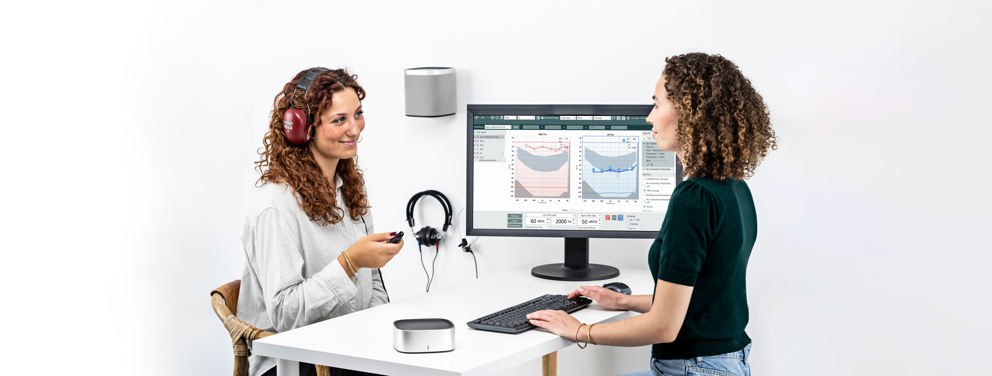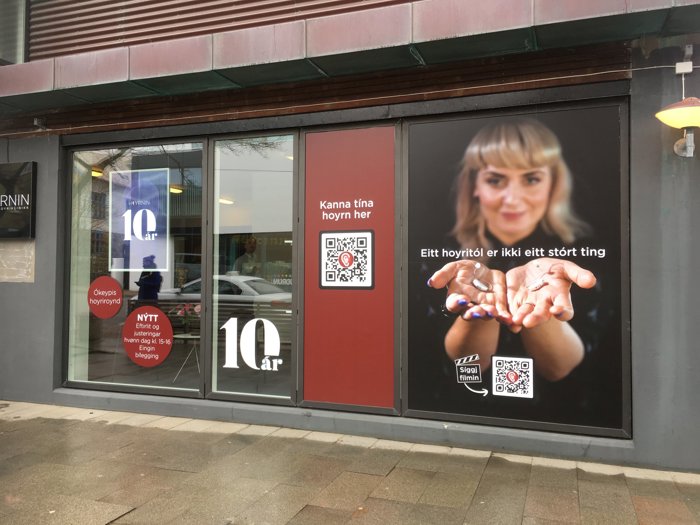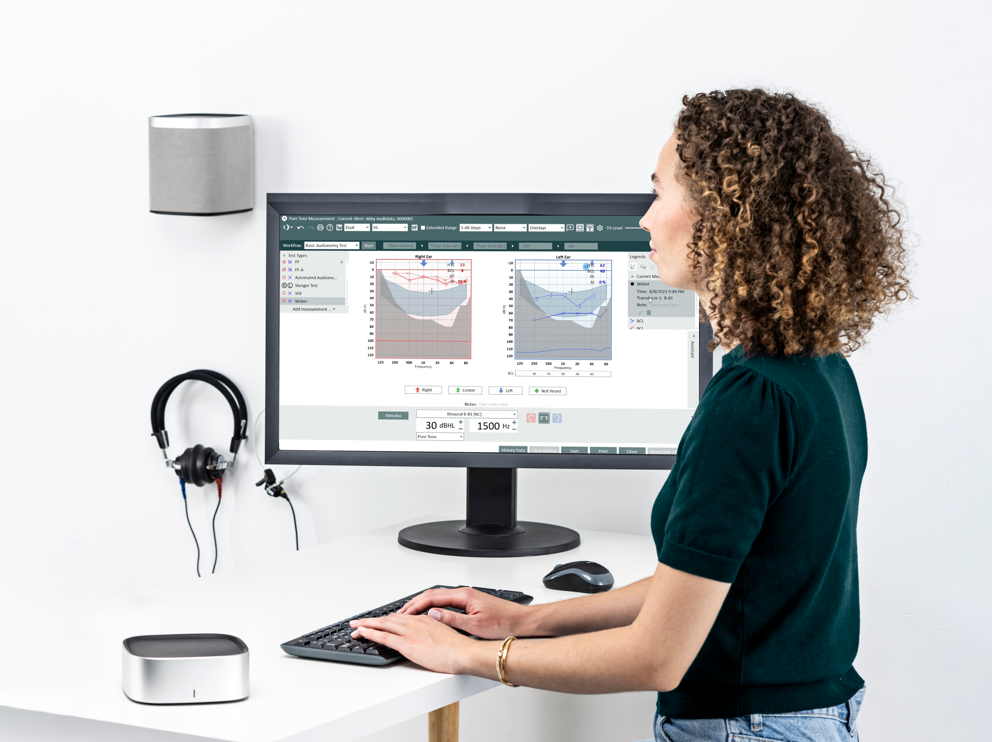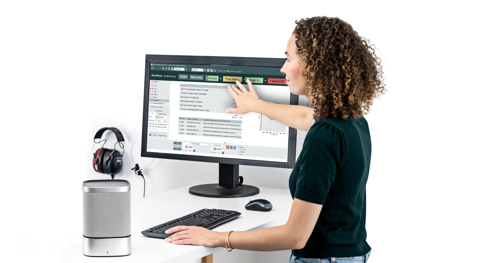
Monitoring Hearing For Employees Exposed to Noise

While hearing loss can occur after just one sudden extremely loud noise, like a gun shot, it more often occurs with gradual noise exposure. Regular hearing tests can help to identify any changes in hearing sensitivity and can signal employers to help employees take steps to prevent further hearing loss.
Individuals may not notice the effects of hearing loss due to frequent daily exposure to loud sounds until they become more pronounced. With continued exposure, the damage can cause hearing loss severe enough to affect quality of life and thus warrant hearing aids or other forms of amplification.
In the US, any noise above 90 dB by which an individual is exposed for over 8-hours is considered dangerous. Worldwide, 600 million individuals are exposed to this level of noise during their workday. Exposure for 8 hours, however, is not necessary for damage related to noise to occur. In a basic sense, the louder the sound is, the less time it takes for permanent hearing damage to occur.
In loud work environments, like a construction site, noise levels often exceed the 90 dB mark. This makes frequent monitoring of hearing imperative to employee health. Noise-induced hearing loss can present as a permanent threshold shift, meaning permanent hearing loss, or a temporary threshold shift, meaning hearing loss after noise exposure that recovers after a short period of time.
Although a “temporary” threshold shift may seem benign as hearing thresholds recover to “normal” or whatever that individual’s hearing acuity was prior to the noise exposure, the damage can still be long-lasting. While hearing acuity to pure tones may recover, individuals may experience long-lasting tinnitus or even difficulty hearing in background noise in the absence of hearing loss.
Without monitoring hearing thresholds regularly, and especially after exposure to an extremely loud noise, an individual in the above-described scenario may not know a temporary threshold shift occurred. Should they have any lasting effects like tinnitus or difficulty hearing in background noise, these symptoms may seem like they came from out of nowhere.
Diagnosing and Monitoring Speech-in-noise Losses

Audiometers can also be used to test for this speech-in-noise loss. For example, the Measure Audiometer have the QuickSIN test built-in making it easy to transition into this speech in noise testing after pure tone audiometry. Poor QuickSIN scores, or scores on other speech-in-noise assessments, can point to early damage from noise even in the absence of traditional hearing loss.
If hearing loss is detected during regular hearing assessments, employers may consider implementing measures to help prevent future effects of noise. This can be in the form of noise dampening near particularly loud rooms or equipment, training employees on the proper use of hearing protection devices, and even shifting schedules to provide workers with break from loud noise.
Evaluate the Effectiveness of Hearing Protection

Audiometers are also used to evaluate the effectiveness of hearing protection, such as earplugs and earmuffs. Clinicians can simply use pure-tone audiometry to assess this. An employee will be tested in the booth with stimuli presented in the sound field via speakers. They will first be tested without the noise protection device and hearing thresholds will be obtained. The individual will then put on their earplugs or earmuffs and hearing thresholds will again be obtained. With these hearing protection devices in, hearing thresholds will drop. The amount of this drop demonstrates the effectiveness of that hearing protection device. For example, if an individual’s threshold at 500 Hz with no hearing protection on is 10 dB, but when wearing ear plugs it is 25 dB, that means those ear plugs provide 15 dB of protection at 500 Hz.
The above protocol can also be used to assess if employees are using hearing protection properly. For example, with foam earplugs, if an individual is not placing them in the ear correctly, leaks may occur and protection from noise may not be sufficient. By testing thresholds after the individual inserts the ear plugs before and after training, the importance of using hearing protection correctly can be demonstrated.
Case Story
Hoyrnin Uses Auditdata’s Solutions to Monitor Employee Hearing
Hoyrnin’s owner/head audiologist Jutta Helgadóttir uses Auditdata’s solutions to improve the entire customer journey. She has secured agreements with local companies, including the largest bank on the Faroe Islands to monitor employee hearing health.

The Importance of Audiometers In Monitoring Employee Hearing Health

Auditdata's audiometer is useful in these environments in various ways. When using the audiometer, traditional pure-tone audiometry can be performed, and noise testing can be built into your testing workflow. As previously mentioned, many individuals exposed to loud sounds experience difficulty hearing in background noise – which often occurs before a decline in hearing acuity. It is a portable audiometer that can easily be carried to these environments, enabling more individuals to be tested. Additionally, it can be used to test the efficacy of hearing protection devices in the work environment.
Getting Started With Employee Hearing Health

If you are an audiologist interested in providing hearing testing services for employees, there are several steps you can take to get started:
Research regulations and guidelines: Before providing hearing testing services to employees, it is important to understand any regulations and guidelines that may apply to your or location. For example, in the United States, the Occupational Safety and Health Administration (OSHA) has regulations related to noise exposure and hearing conservation in the workplace. We discussed some of these above. Familiarize yourself with any relevant regulations to ensure that you are providing testing services that meet industry standards.
- Develop partnerships: To provide these services, you will need to develop partnerships with companies that are interested in offering these services to their employees. You can start by reaching out to companies in industries where noise exposure is common, such as construction, manufacturing, and transportation. Attend networking events and conferences to meet potential partners and build relationships.
- Determine your pricing model: Before offering your services, you will need to determine your pricing model. You may choose to charge a flat fee per employee, or you may charge per test performed. Consider the costs associated with providing these services, such as equipment, staff time, and travel expenses, when setting your prices.
- Purchase or lease equipment: To perform hearing tests, you will need specialized equipment such as audiometers, transducers, and sound booths. You may choose to purchase this equipment outright, or you may lease it to reduce upfront costs.
- Develop a testing protocol: Develop a standardized testing protocol to ensure that all employees receive the same level of care and that results are consistent across different testing sessions. This may include instructions for how to use hearing protection devices, guidelines for retesting, and a plan for follow-up care if hearing loss is detected.
- Advertise your services: Once you have partnerships in place and a testing protocol developed, it's time to start advertising your services. Consider creating marketing materials such as brochures or flyers to distribute to potential partners or create a website to promote your services.
As a small clinic, it may be challenging to compete with larger audiology practices that specialize in industrial hearing testing. Consider partnering with other small clinics in your area to pool resources and expand your services. You may also want to consider offering additional services such as hearing aid fittings or tinnitus management to differentiate yourself from larger competitors. Finally, provide excellent customer service to your partners and their employees to build long-lasting relationships and encourage repeat business.
Other Blogs You Might Enjoy:

How to Use Clinical Workflows To Improve Efficiency, Quality And Customer Satisfaction
Proper audiological treatment increases purchasing rates. But how do you ensure that all your staff-members follow the same processes and how do you measure what a good clinical process is? Measurable clinical workflows is the solution. You can introduce these to your staff, and when automating them, they are easy to change, track and optimize.

How To Increase Lifetime Value of a Hearing Aid Customer
Onboarding new customers is expensive and takes significant effort. Competition is fierce. When you get a customer to choose you, make the most out of it and ensure that this customer stays with you thus increasing their lifetime value. This blog is relevant for hearing care providers, who want to increase the customer lifetime value of each customer.

The Importance of Regular Hearing Tests and Using Audiometers
Hearing tests are important for both diagnosing and monitoring hearing loss. Audiometers are used to track changes in hearing loss to ensure proper treatment. This blog elaborates on the importance of regular hearing tests.
Don't Miss Out On the Latest Insights On Audiology
Sign up today to receive exciting updates, tips, and the latest newsletters from Auditdata.